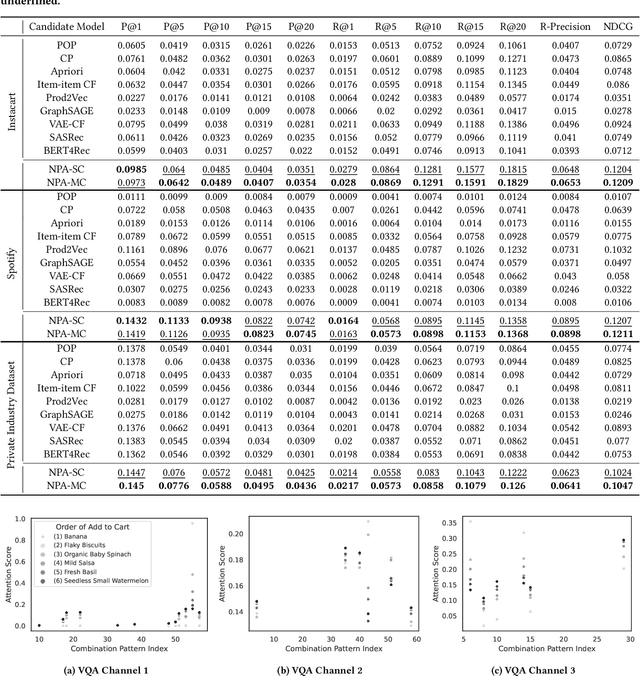Lan Yao
MedReseacher-R1: Expert-Level Medical Deep Researcher via A Knowledge-Informed Trajectory Synthesis Framework
Aug 20, 2025Abstract:Recent developments in Large Language Model (LLM)-based agents have shown impressive capabilities spanning multiple domains, exemplified by deep research systems that demonstrate superior performance on complex information-seeking and synthesis tasks. While general-purpose deep research agents have shown impressive capabilities, they struggle significantly with medical domain challenges, as evidenced by leading proprietary systems achieving limited accuracy on complex medical benchmarks. The key limitations are: (1) the model lacks sufficient dense medical knowledge for clinical reasoning, and (2) the framework is constrained by the absence of specialized retrieval tools tailored for medical contexts.We present a medical deep research agent that addresses these challenges through two core innovations. First, we develop a novel data synthesis framework using medical knowledge graphs, extracting the longest chains from subgraphs around rare medical entities to generate complex multi-hop question-answer pairs. Second, we integrate a custom-built private medical retrieval engine alongside general-purpose tools, enabling accurate medical information synthesis. Our approach generates 2100+ diverse trajectories across 12 medical specialties, each averaging 4.2 tool interactions.Through a two-stage training paradigm combining supervised fine-tuning and online reinforcement learning with composite rewards, our MedResearcher-R1-32B model demonstrates exceptional performance, establishing new state-of-the-art results on medical benchmarks while maintaining competitive performance on general deep research tasks. Our work demonstrates that strategic domain-specific innovations in architecture, tool design, and training data construction can enable smaller open-source models to outperform much larger proprietary systems in specialized domains.
HCAF-DTA: drug-target binding affinity prediction with cross-attention fused hypergraph neural networks
Apr 02, 2025



Abstract:Accurate prediction of the binding affinity between drugs and target proteins is a core task in computer-aided drug design. Existing deep learning methods tend to ignore the information of internal sub-structural features of drug molecules and drug-target interactions, resulting in limited prediction performance. In this paper, we propose a drug-target association prediction model HCAF-DTA based on cross-attention fusion hypergraph neural network. The model innovatively introduces hypergraph representation in the feature extraction stage: drug molecule hypergraphs are constructed based on the tree decomposition algorithm, and the sub-structural and global features extracted by fusing the hypergraph neural network with the graphical neural network through hopping connections, in which the hyper edges can efficiently characterise the functional functional groups and other key chemical features; for the protein feature extraction, a weighted graph is constructed based on the residues predicted by the ESM model contact maps to construct weighted graphs, and multilayer graph neural networks were used to capture spatial dependencies. In the prediction stage, a bidirectional multi-head cross-attention mechanism is designed to model intermolecular interactions from the dual viewpoints of atoms and amino acids, and cross-modal features with correlated information are fused by attention. Experiments on benchmark datasets such as Davis and KIBA show that HCAF-DTA outperforms state of the arts in all three performance evaluation metrics, with the MSE metrics reaching 0.198 and 0.122, respectively, with an improvement of up to 4% from the optimal baseline.
Combining Generative and Geometry Priors for Wide-Angle Portrait Correction
Oct 13, 2024Abstract:Wide-angle lens distortion in portrait photography presents a significant challenge for capturing photo-realistic and aesthetically pleasing images. Such distortions are especially noticeable in facial regions. In this work, we propose encapsulating the generative face prior as a guided natural manifold to facilitate the correction of facial regions. Moreover, a notable central symmetry relationship exists in the non-face background, yet it has not been explored in the correction process. This geometry prior motivates us to introduce a novel constraint to explicitly enforce symmetry throughout the correction process, thereby contributing to a more visually appealing and natural correction in the non-face region. Experiments demonstrate that our approach outperforms previous methods by a large margin, excelling not only in quantitative measures such as line straightness and shape consistency metrics but also in terms of perceptual visual quality. All the code and models are available at https://github.com/Dev-Mrha/DualPriorsCorrection.
Within-basket Recommendation via Neural Pattern Associator
Jan 25, 2024



Abstract:Within-basket recommendation (WBR) refers to the task of recommending items to the end of completing a non-empty shopping basket during a shopping session. While the latest innovations in this space demonstrate remarkable performance improvement on benchmark datasets, they often overlook the complexity of user behaviors in practice, such as 1) co-existence of multiple shopping intentions, 2) multi-granularity of such intentions, and 3) interleaving behavior (switching intentions) in a shopping session. This paper presents Neural Pattern Associator (NPA), a deep item-association-mining model that explicitly models the aforementioned factors. Specifically, inspired by vector quantization, the NPA model learns to encode common user intentions (or item-combination patterns) as quantized representations (a.k.a. codebook), which permits identification of users's shopping intentions via attention-driven lookup during the reasoning phase. This yields coherent and self-interpretable recommendations. We evaluated the proposed NPA model across multiple extensive datasets, encompassing the domains of grocery e-commerce (shopping basket completion) and music (playlist extension), where our quantitative evaluations show that the NPA model significantly outperforms a wide range of existing WBR solutions, reflecting the benefit of explicitly modeling complex user intentions.
$l_{1-2}$ GLasso: $L_{1-2}$ Regularized Multi-task Graphical Lasso for Joint Estimation of eQTL Mapping and Gene Network
Jan 04, 2023



Abstract:A critical problem in genetics is to discover how gene expression is regulated within cells. Two major tasks of regulatory association learning are : (i) identifying SNP-gene relationships, known as eQTL mapping, and (ii) determining gene-gene relationships, known as gene network estimation. To share information between these two tasks, we focus on the unified model for joint estimation of eQTL mapping and gene network, and propose a $L_{1-2}$ regularized multi-task graphical lasso, named $L_{1-2}$ GLasso. Numerical experiments on artificial datasets demonstrate the competitive performance of $L_{1-2}$ GLasso on capturing the true sparse structure of eQTL mapping and gene network. $L_{1-2}$ GLasso is further applied to real dataset of ADNI-1 and experimental results show that $L_{1 -2}$ GLasso can obtain sparser and more accurate solutions than other commonly-used methods.
 Add to Chrome
Add to Chrome Add to Firefox
Add to Firefox Add to Edge
Add to Edge